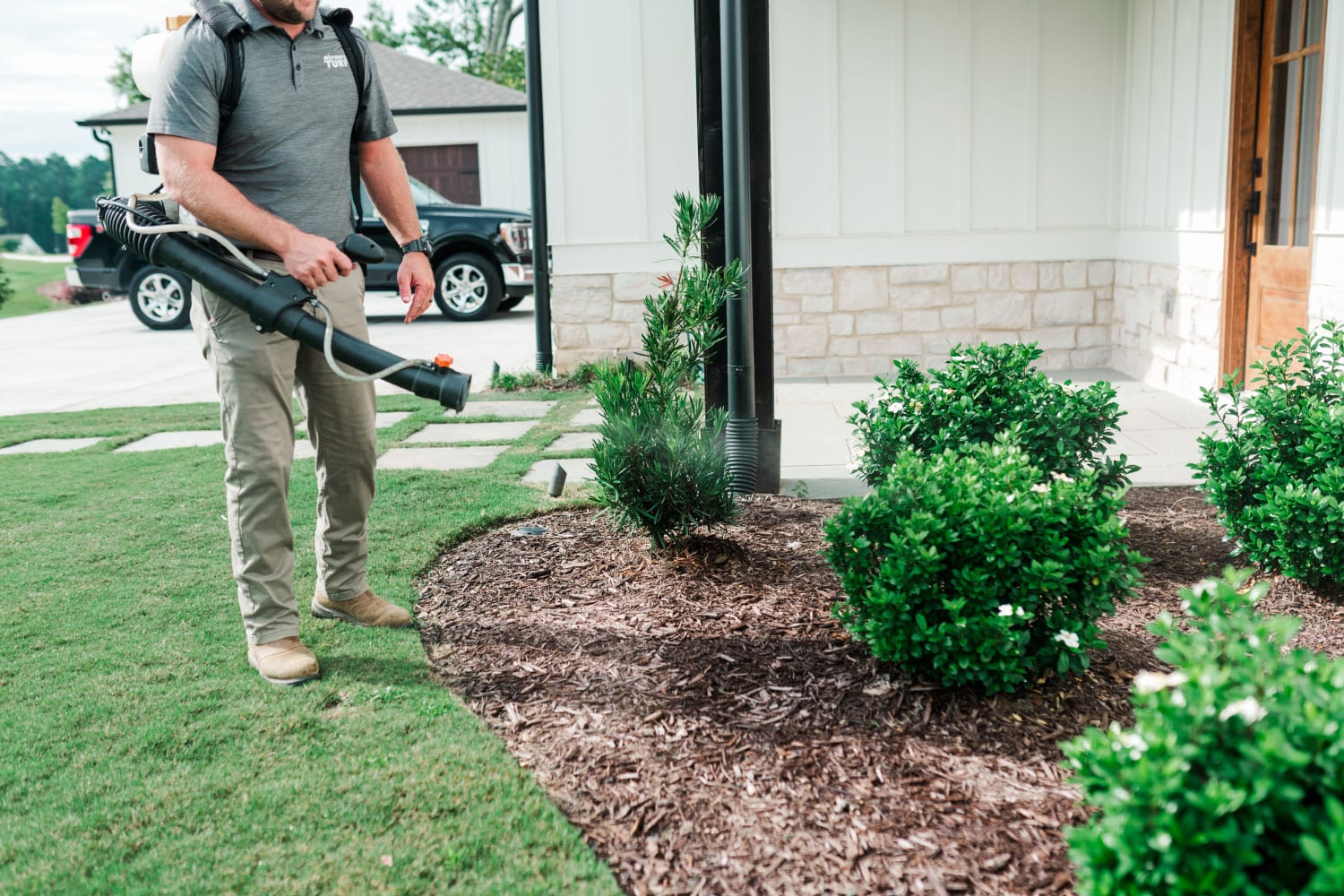Just the thought of mosquitoes makes me itchy. Of all pests, mosquitoes are some of the most researched and discussed. Beyond being a nuisance that causes annoyance and discomfort, they’re ubiquitous, persistent, and often vectors of communicable illnesses. Many of our pest control blogs are written through the lens of pest triangles and integrated pest management strategies. This blog will look at mosquitoes through both.
The Pest Triangle: Integrated Pest Management Strategy
The pest triangle looks at the three primary foundational requirements for infestation: the pest itself, a suitable environment, and a host. Integrated pest management combines knowledge of the pest and effective control strategies, both chemical and non-chemical, to more effectively control pests while responsibly using the available resources. Below are the legs of the pest triangle and integrated pest management strategies to control each.
The Pest: Mosquitoes
Of the 63 known species of mosquitoes in Georgia, 10-12 are pests that directly affect humans, posing health risks. Unlike wasps and bees that require provocation to sting, mosquitoes are a nuisance for mundane reasons. They simply need to eat, and our coexistence with them provides a food source.
The health concerns associated with mosquitoes are rooted in their ability to be a vector of communicable illnesses. Their eating habits mean they can unintentionally retrieve a pathogen from one host and introduce it to another by simply feeding. This isn’t nefarious in any way, but the situation beckons answers for control.
Your partnership with the Pest Professionals at Nature’s Turf is the key factor that contributes to reducing mosquito populations in and around your home. A combination of control products and growth regulators are strategically applied to key harborage points in the landscape, which then reduce the number of adults, control the number of juveniles that become adults, and minimize impacts on non-target insects.
A Suitable Environment
Mosquitoes need a couple of key environmental features to thrive, the most important of which is water. Standing, stagnant water is required for the larval stages of mosquitoes to exist and grow. They look like little worms in water that move by folding and extending their bodies.
It doesn’t take much water for mosquitoes to take advantage. Water sitting in old tires, children’s toys, sandboxes, temporary pools that don’t circulate, bird baths, and even clogged gutters are enough to create an environment sufficient for these larvae. Here are things you can do to greatly reduce the number of suitable environments: take weekly walks to overturn light vessels, replace the water in landscape features weekly, and maintain clean gutters.
Adults require harborage points. These could be plants that we absolutely want to keep, but could also be wood piles, fallen trees, stumps, or other accumulated debris. Removing these types of debris is not only good for your landscape’s aesthetic, but also reduces the places mosquitoes can hide and overwinter.
The Host: You (Or Other Animals)
Removing the host (you) from the pest is the most difficult piece of the pest triangle to control. We want to be outside. They’re outside. We have conflicting interests. It’s important to know this fact: the best laid plans are great for reducing populations, but we are ultimately trying to control animals in their own environment. Innumerable variables are present, so it’s still a good idea to take proper precautions when outside.
When possible, wear loose fitting clothing that minimizes exposed skin. This is a great way to limit points of interest for mosquitos. This may not work for someone interested in swimming, so using repellents will also help discourage opportunistic feeding. The goal is to minimize feeding opportunities for the reduced population you’ve created by reducing standing water, cleaning harborage points, and hiring your trusted pest control partners at Nature’s Turf.
If you have any questions or concerns, we’re always happy to chat. Give us a call at 770-461-4156, or email us at info@naturesturf.com. We’d love to discuss control methods and additional strategies to get the most out of our services.








